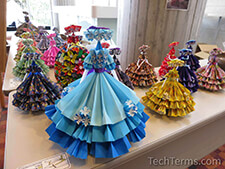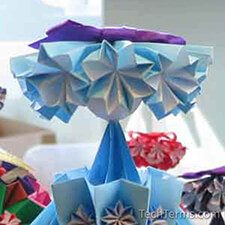JPEG
Stands for "Joint Photographic Experts Group." JPEG is a popular image file format. It is commonly used by digital cameras to store photos since it supports 224 or 16,777,216 colors. The format also supports varying levels of compression, which makes it ideal for web graphics.
The 16 million possible colors in a JPEG image are produced by using 8 bits for each color (red, green, and blue) in the RGB color space. This provides 28 or 256 values for each of the three colors, which combined allow for 256 x 256 x 256 or 16,777,216 colors. Three values of 0 produce pure black, while three values of 255 create pure white.
The JPEG compression algorithm may reduce the file size of a bitmap (BMP) image by ten times with almost no degradation in quality. Still, the compression algorithm is lossy, meaning some image quality is lost during the compression process. For this reason, professional digital photographers often choose to capture images in a raw format so they can edit their photos in the highest quality possible. They typically export the pictures as JPEG (.JPG) images when they are shared or published on the web.
Besides image data, JPEG files may also include metadata that describes the contents of the file. This includes the image dimensions, color space, and color profile information, as well as EXIF data. The EXIF data is often "stamped" on the image by a digital camera and may include the aperture setting, shutter speed, focal length, flash on/off, ISO number, and dozens of other values.
Disadvantages of the JPEG Format
While the JPEG format is great for storing digital photos, it does have some drawbacks. For example, the lossy compression can cause an issue called "artifacting," in which parts of the image become noticeably blocky. This typically happens when a high compression setting is used to save the image. For saving small images and images with a lot of text, the GIF format is often a better alternative. JPEG images also don't support transparency. Therefore, the JPEG format is a poor choice for saving non-rectangular images, especially if they will be published on webpages with different background colors. The PNG format, which supports transparent pixels is more ideal for these types of images.
NOTE: The Joint Photographic Experts Group, which the JPEG image format is named after, published the first JPEG specification in 1992. Since then, the organization has developed several variations of the format, including JPEG 2000 and JPEG XR. However, the standard JPEG format remains the most popular.
File extensions: .JPG, .JPEG, .JFIF, .JPX, .JP2
 Test Your Knowledge
Test Your Knowledge
